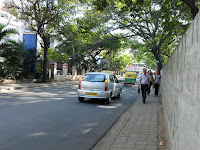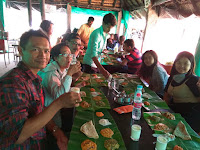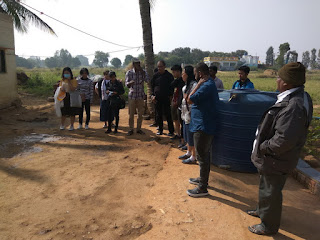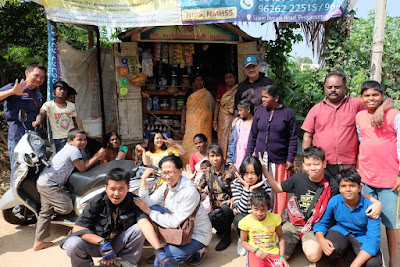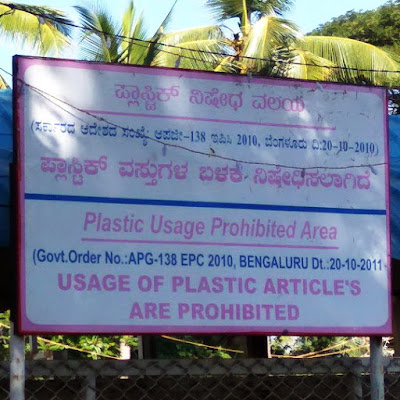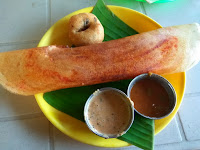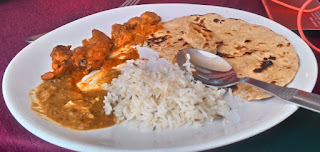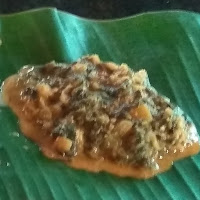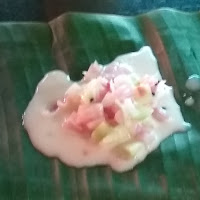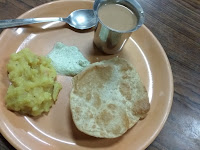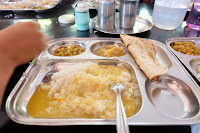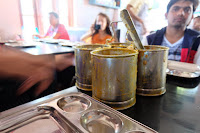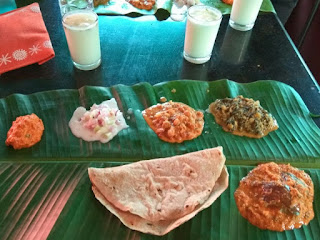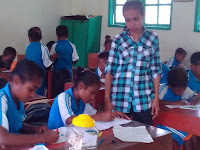Indian Youth and Social Problems
Friday, 29 December 2017by adminstube
“You are what you read” is a quote to say that through reading someone will broaden his/her knowledge and knowcurrent news and issues, While, without reading someone know nothing. In my hometown in Central Sulawesi, I rarely found youth interested in social activity or social issues of his/her surrounding. If so, their activity is commonly a kind of demonstration without any real action to solve the problem for the sake of the people’s goodness.
I felt so proud to join the exchange program to Bangalore-India, and amazed with the youth for their attention to social problem by involving themselves in some NGOs, such us SCMI (Student Christian Movement of India), YMCA (Young Men’s Christian Association), and YWCA (Young Men’s Christian Association).
When joining these organizations, youth learn not only attend a training but they are expected to learn social issues and to involve in such issues to develop their soft skills that are not be obtained in schools or university. In addition, when joining NGOs there are several program is conducted out of the region that depend on the programs level (regional, national and international). This is a chance to get experiences by visiting many places, doing services and broadening relations.
India is a plural country like Indonesia derived from several regions, ethnics, languages, and cultures. The chance to travel and to meet people with different background is very important thing to do as they will know each other, strengthen sense of brotherhood and minimize prejudice.
The low interest and knowledge of Indonesian youth to join organization is one reason why they have less concern to environment and actual issues. The benefits of joining organization is giving added value that is required when they enter work world, because there is not only certificate and grade as the standard but also experiences and activities done outside campus. There are many organizations that can be followed based on his/her interest, such as human rights, youth empowerment, mentoring children with special needs, interfaith community, care for environment, etc.
Through SCMI and the Indian youth, it should be noted that Indonesian youth should increasse the sense of social problems. Indonesia’s next generation should be encouraged to join organization and training that provide knowledge to increase an awareness of social problem in the surroundingcommunity. (JMNP).
Scooping Inspiration in India (South to South Exchange Program to India)
Friday, 29 December 2017by adminstube
India one of the neighboring countries of Indonesia has a rapid development of information technology that the world considers about. The cooperation and solidarity among youth of these two countries located in the Asian region are expected to be established and to contribute to each countries for the achievement of international development objectives, as stated in SDGs (Sustainable Development Goals). Of course, the country with the world's 2nd largest population also has social and cultural problems in the lives of its people.
 South-to-South Exchange Program to India fully supported by Ecumenical Scholarship Program Brot-für-die-Welt, Germany, on 19-27 December 2017 was held to support the reasons mentionedabove, particularly facilitating youth of the two countries to meet each other. Eight participants from Indonesia are Bambang Sumbodo, Ariani Narwastujati, Trustha Rembaka, Yohanes Dian Alpasa, Indah Theresia, Elisabeth Uru Ndaya, Jimmy Nover Putu and Anggita Getza Permata. They attended discussions and did exposures with Student Christian Movement in India (SCMI).
South-to-South Exchange Program to India fully supported by Ecumenical Scholarship Program Brot-für-die-Welt, Germany, on 19-27 December 2017 was held to support the reasons mentionedabove, particularly facilitating youth of the two countries to meet each other. Eight participants from Indonesia are Bambang Sumbodo, Ariani Narwastujati, Trustha Rembaka, Yohanes Dian Alpasa, Indah Theresia, Elisabeth Uru Ndaya, Jimmy Nover Putu and Anggita Getza Permata. They attended discussions and did exposures with Student Christian Movement in India (SCMI).Bangalore,

 This city became the starting point of all activities that began with welcoming, introducing each other and a session delivered by Rev. Godson, a pastor of Methodist Church in India, who researched the benefits of palm trees/lontar (B. Flabellifer). This tree is known as tuak, lontar or siwalan crops in Indonesia. During students dialogue, Stube-HEMAT presented the activities and dynamics of Christian youth service in Indonesia. Furthermore, SCMI India activists described SCMI as the oldest ecumenical youth organization in India because it was formed since 1912 and experienced in serving young people in India based on the love of Christfor every human being. SCMI activity covered thirteen regions of India started from local unit level in campus, church and city, region and national level.
This city became the starting point of all activities that began with welcoming, introducing each other and a session delivered by Rev. Godson, a pastor of Methodist Church in India, who researched the benefits of palm trees/lontar (B. Flabellifer). This tree is known as tuak, lontar or siwalan crops in Indonesia. During students dialogue, Stube-HEMAT presented the activities and dynamics of Christian youth service in Indonesia. Furthermore, SCMI India activists described SCMI as the oldest ecumenical youth organization in India because it was formed since 1912 and experienced in serving young people in India based on the love of Christfor every human being. SCMI activity covered thirteen regions of India started from local unit level in campus, church and city, region and national level.

 This city became the starting point of all activities that began with welcoming, introducing each other and a session delivered by Rev. Godson, a pastor of Methodist Church in India, who researched the benefits of palm trees/lontar (B. Flabellifer). This tree is known as tuak, lontar or siwalan crops in Indonesia. During students dialogue, Stube-HEMAT presented the activities and dynamics of Christian youth service in Indonesia. Furthermore, SCMI India activists described SCMI as the oldest ecumenical youth organization in India because it was formed since 1912 and experienced in serving young people in India based on the love of Christfor every human being. SCMI activity covered thirteen regions of India started from local unit level in campus, church and city, region and national level.
This city became the starting point of all activities that began with welcoming, introducing each other and a session delivered by Rev. Godson, a pastor of Methodist Church in India, who researched the benefits of palm trees/lontar (B. Flabellifer). This tree is known as tuak, lontar or siwalan crops in Indonesia. During students dialogue, Stube-HEMAT presented the activities and dynamics of Christian youth service in Indonesia. Furthermore, SCMI India activists described SCMI as the oldest ecumenical youth organization in India because it was formed since 1912 and experienced in serving young people in India based on the love of Christfor every human being. SCMI activity covered thirteen regions of India started from local unit level in campus, church and city, region and national level.
Celebrating Christmas with the family of SCM India was a wonderful moment to remember. Talents of children and performances of youth and studentsthrough dancing, singing and drama were displayed.The students of Stube-HEMAT Indonesia presented drama and singing either. Christmas message was delivered by Prof. Kiran Jeevan from St. Petersburg Joseph College, Bangalore, who invited everyone to contemplate, whether everyone has done good things for others. Christmas, December 25, 2017, Stube-HEMAT attended a service at St. Mark Church, Bangalore. This church has got lots of influences from United Kingdom in its architecture and church’s denomination.
The Ahmadiyya community of Bangalore provided an opportunity for participants tomake interfaithdialogue.This community often held social activities and cooperation with other multicultural communities in the city because they wanted to show that Islam is a loving religion for all mankind in the world, not a radical group which is identicalwith terrorism.
It should be admitted that the city is concernedwell with public spaces with many urban parks overgrown with shady trees even though the city's traffic is quite mazy and noisy with vehicles’ horn.
Mysore,
On the way to Mysore, still in Karnataka state, Indonesian-Indian participants visited Sri Nimishamba temple where visitors are required to put off their footwear even still at the temple’s yard. There is an interesting billboard here regarding the prohibition of plastic use in the temple area.
The Sultan Tippu summer palace became the next visit. Built in 1784, the palace is preserved its authenticity as well as the magnificent and well-maintained Catholic Church St. Filomena.
Sri Chamarajendra Zoological Garden is a large and shady zoo, where the Sultan of Tippu kept his captured animals. The zoo also did strict control over the use of plastic bottles of drinks brought by visitors.
Finally, Amba Vilasa palace, the magnificent palace of Sultan of Tippu with its gigantic pillars, carved doors and paintings on the palace ceiling welcomed thousands of tourists who were stunned by the beauty of the buildings and heritages.
Finally, Amba Vilasa palace, the magnificent palace of Sultan of Tippu with its gigantic pillars, carved doors and paintings on the palace ceiling welcomed thousands of tourists who were stunned by the beauty of the buildings and heritages.
Ooty,
 The city is located in the highlands of Tamil Nadu state, southern India. The bus trip from Bangalore to Ooty was usually 7 hourshowever it became 12 hours, due to traffic jams. The journey traversed straight and winding road through towns, villages, fields and Bandipur and Mudumalai national parks.
The city is located in the highlands of Tamil Nadu state, southern India. The bus trip from Bangalore to Ooty was usually 7 hourshowever it became 12 hours, due to traffic jams. The journey traversed straight and winding road through towns, villages, fields and Bandipur and Mudumalai national parks.Ooty located more than 300 km south of Bangalore became a tourist destination because it has interesting places like tea plantation, lakes, chocolate making and eucalyptus distillation. The large number of visitors with four-wheeled vehicles on the narrow and winding roads with cliffs on the left and ravines on the right passing through tea plantations caused total congestion. This area needed to be rearranged for its road management and area’s carrying capacity.
Hosur,
The next learning is Indian rural life by visiting Hosur, a small town in Tamil Nadu state, 45 kms to the east of Bangalore. Rev. Sudhakar Joshua, pastor of CSI (Church of South India) in Hosur picked up and guided the Indonesian-Indian participants to a village church built in 1908 and it is still useduntil now. Some of the furnitures and inscriptions showed the old of this church.
There is a uniqueness found when visiting a house in Edayanallur village, the villagers watered the house yards with mixture of cow dung and water to sterilize their house from insects. They enthusiastically welcomed and joined the dialogue even though it was the first meeting. In addition they also showed the rose garden that became the livelihood income for one offamily there. Even though they lived with limitation, they still have a hope for their future.
What an inspiring journey to keep life in harmony!(TRU).
Dalit Theology: The Form of Love to Others (South to South Exchange Program to SCM India)
Friday, 29 December 2017by adminstube
Dalit theology is a long struggle of church in India after observing the structured poverty that is very difficult to be penetrated because it is integrated in religious teachings. Many parties feel uncomfortable with the birth of Dalit Theology because of the anxiety that it will overthrow religious teachings that have become rigid doctrines even absolute doctrine. As we all know that culture and religion are united, even unseparable as "Hinduism is India and India is Hinduism". And for me, Dalit Theology is Theology in Loco or Local Dalit Christian which is revolutionary and it isdone through an awareness process. Dalit theology is different from Liberation theology in Latin America with its frontal method, fighting with all ways to overthrow injustice ruler or system.
Dalit theology is inspired by the arrival of Christian missions coming to India such as Portuguese, Dutch, especially Britain. Although they colonized India, their church role was greatly feltthrough out India, especially their diakonia services covering schools, hospitals and orphanages,moreover the presence of mother Theresa in Calcutta. The basic thought of Dalit Theology is taken from Luke 4: 18-19, saying "The Spirit of the Lord is upon me, because he hath anointed me to preach the gospel to the poor; he hath sent me to heal the brokenhearted, to preach deliverance to the captives, and recovering of sight to the blind, to set at liberty them that are bruised, 19 To preach the acceptable year of the Lord.”
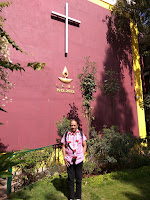 The results and fruit of Dalit Theology are perceived by Indian indemocracy, the increase of rightequality, the success of lower class in education and became agents of change to lead to more developed society. One real evidence of Dalit Theology is SCMI.
The results and fruit of Dalit Theology are perceived by Indian indemocracy, the increase of rightequality, the success of lower class in education and became agents of change to lead to more developed society. One real evidence of Dalit Theology is SCMI.About 40 years ago there was also a theology in Indonesia that was identical with Dalit Theology. It was called Balance Theology, based on 2 Corinthians 8: 11-15 which reads, "11 Now therefore perform the doing of it; that as there was a readiness to will, so there may be a performance also out of that which ye have. 12 For if there be first a willing mind, it is accepted according to that a man hath, and not according to that he hath not. 13 For I mean not that other men be eased, and ye burdened: 14 But by an equality, that now at this time your abundance may be a supply for their want, that their abundance also may be a supply for your want: that there may be equality: 15 As it is written, He that had gathered much had nothing over; and he that had gathered little had no lack.”
At last, Greetings of love and peace for India. (Bambang Sumbodo).
The Challenge of Cleanliness and Waste Management India – Indonesia
Friday, 29 December 2017by adminstube
Four cities that we have visited during the exchange program, Bangalore, Mysore, Ooty and Hosur showed their own characteristics on cleanliness. Bangalore and Ooty have challenges to organize and managetheir scattered rubbish. Such cases are commonly faced by big cities, such as Jakarta and Surabaya in Indonesia. Actually, there are some efforts tomanage rubbish by increasing the number of rubbish bins in public areas and they are regularly removed. The goverment of Jakarta Special Region establishesa unit, called PPSU (Staffs for Handling Facilities and Public Infrastructure) to maintain it, while the residents of Yogyakarta have to pay some money for the garbage collector, and the government of North Bengkulu regency has to issue a regulation oncleanliness in the territory. Rubbish management become criticism for Indonesian youth since there are still many people throw garbage in the rivers.
Animal dung like bird droppings, dogs, horses, or cows become additional challenge for those four cities mentioned above. Horse dung risks for health because certain horses are infected by bacteria that carry tapeworms; bird droppings are found in mostlybuildings and places in Bangalore; horse dung in Ooty, and cow dung in Hosur are still scattered.However, the participants of the program have not heard the issue about diseases risk caused by animal dung, but it is better to do prevention.
The different views about cleanliness may bring opportunity to unite and share experiences. It is time for us to learn how to manage environment so it can meet the standards set by health authorities.
Of course, it is not easy to work and to achieve ideal sanitation conditon in Indonesia. The government is still struggling to implement solution for sanitation management. The youth are also expected to participate by manage their own waste. In India, people do not use much plastic and there is special initiative related with plastic waste, as seen in Mysore Zoo, in which every visitor should show his/her plastic bottle and make sure that they do not throw it in the zoo area. Indonesia seemed to be more loose in using plastic packaging than India.It means that Indonesia has big homework forcleanliness and plastic waste.
Finally, I’m grateful for the opportunity joining South to South Exchange Program given by Stube-HEMAT Yogyakarta. The experience to meet young friends from different cultures enriches experiences andencourages us to develop our regions. A new thing creates a new spirit that can be shared with otheryoung friends in Indonesia. (YDA).
Tracing Back the Ancestors of Sumbanese in India
Friday, 29 December 2017by adminstube
All activities started from Bangalore then moved to other small towns, to places of civilizationheritage and to villages completed with a couple of dialogues with local communities. I found many interesting experiences and unique things that I saw and observed on Indian people’s habits and lifestyles starting from their physical characteristics, dressing style and how they dialogue with others. Physically, on the average they have sharp nose, dark-skinned and wavy hair as identical as Sumbanese’s physical features. The wayhow they talk is similar with Sumbanese with their stern voice and sometimes impress fierce. The Indian men’s traditional dressing style is similar with Sumbanese men’s, as they wear shirt for the upper part and sarong or cloth wrapped around the waist as bottom part and scarf tied up around the head. While Indian women’s have little difference, they wear saree, but in Sumba, the women wear sarong. In agriculture, Indians who live in coastal area have palm trees as in Sumba. They utilized them as thesame in Sumba such as for crafts, palm sugar,alcoholic palm drink called ‘tuak’ and lontar leaves used as writing sheet. Even the ancient pattern wall ornaments have similarities with animal symbols, such as horse, bird, crocodile and shrimp.
How did they arrive in Sumba island and what for? A book, entitled "The Atlas of Historical ports in Indonesia" published by Directorate of History and Cultural Values, Directorate General of Culture, Ministry of Education and Culture of Republic Indonesia, 2013, wrote that Indonesia as a maritime state has historical journey closely related to marine voyage and trading activities since AD century. The historical sources noted that the trading commodities such as camphor, cinnamon, pepper, cloves were chosen as preferences by foreign traders for a long time. It caused many ports becomebusier with the visit of foreign traders from China, India, Arab, as well as European traders such as Portuguese, Spanish, Dutch and Britain. Almost all areas in Indonesia were visited by foreign traders. Some traders from India and China reached Nusa Tenggara teritory since the establishment of Majapahit kingdom. The needs for quality horses ofMajapahit were supplied from Sumbawa island since 15th century. The voyages from South China Sea passed through Malacca strait to Java or Kalimantan and then moved to the east through Java Sea to Bali, Lombok, Kupang and Timor including Sumba to seek sandalwood and exchanged stuffs from abroad, such as cloth from Gujarat, metal goods and beads.
History recorded the journey of Indians to Indonesia and convinced me that there is a connection between culture of India and Sumba. I am motivated to maintain a network with Indian friends. (Elis)
Healthy Menu Ala India Bangalore - Mysore - Ooty - Hosur
Friday, 29 December 2017by adminstube
Commonly, food in India is vegetarian one, no meat butmore vegetables and beans. These could be the influence of Hindu tradition as Indianculture and religion majority. The first experiences with Indian culinary began with enjoying Dosai, a kind of pancake made of fermented rice flour as carbohydratesources, complemented with Masala, made of boiled potatoes and spices.
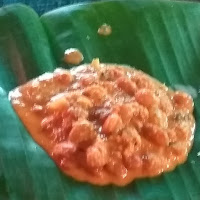 The protein source is obtained from vegetables and beans processed with coconut milk or spices. Some dishes from beans are a kind of soybeans, lentils and long beans. In addition, there are cassava leaves processed into dishes like‘rendang’ in Indonesia. As a refresher, milk yoghurt plus cucumbers, tomatoes and onions are processed into pickles. It becomes a refreshing dish during having eating, but not all people like it.
The protein source is obtained from vegetables and beans processed with coconut milk or spices. Some dishes from beans are a kind of soybeans, lentils and long beans. In addition, there are cassava leaves processed into dishes like‘rendang’ in Indonesia. As a refresher, milk yoghurt plus cucumbers, tomatoes and onions are processed into pickles. It becomes a refreshing dish during having eating, but not all people like it.
Chai drink is a daily drink in India. Actually, this is not an ordinary tea like in Indonesia, but more appropriate called boiled milk with tea leaves. In every visit the beverageoffered is Chai, although coffee, milk, mineral water and others are alsoavailable. Ooty is a tea plantation area in southern India and it produces export-quality tea. A bakwanlooked like snack made of corn and Ladu made offlour, milk and honey, as well as various dried fruit can be found there.
The way of serving food is also an interesting thing. In addition, spoonsare rarely used, while eating with flat plate for curry, aluminum plate/bowls, even the reusable banana leaves, enrich the students with experiences. However, the use of banana leaves for food utensil is one concept styleof 'back to nature'.
Beside knowing and enjoying new foods and beverages, there is additional knowledge of healthy menucomposition, even vegetarian foods and spices. It is admitted that in Indonesia, the various types of plant and spices have not been maximally utilized as foods and served like in India. Thus, thisexperience is kind of encouragement to try and to find more healthy sources of spices and foods for Indonesians. (Trustha Rembaka).
Towards One Indian Official Language
Friday, 29 December 2017by adminstube
No need to doubt more, India has a prodigious diversity, as the seventh largest country based on the areal, and the second largest country based on its population, India has so many languages ??spread across its 29 states with more than 1600 spoken languages ??with different official languages ??in each state. There are total 23 official languages; Assam, Bengali, Bodo, Dogri, English, Gujarati, Hindi, Kannada, Kashmir, Konkani, Maithili, Malayalam, Marathi, Meitei (Manipuri), Nepali, Odia, Punjabi, Sanskrit, Santali, Sindhi, Tamil, Telugu, and Urdu.
It is totally precious in the term of its richness of language and culture. By having such plurality, people are trained to be more tolerant to others. However, sometimes by having many languages ??in only one country, segmentation, the lack of unity and patriotism sense will be existed. There will also be a lot of misunderstanding every time a conversation happens in everyday life.
Nowadays, the Indian government continues to campaign the use of Hindi as an official language. The decision on choosing Hindi is based on the consideration that it is easy and simple, it also has many users in India. On the other hand, the government does not want the multilingualism in India to be lost. By using Hindi, the government hopes that people can easily learn the language itself, people then will be able to talk to each other easily, without losing their own language. The goods and bads to make Hindi as the official language must have been considered before it was published. By having Hindi as the official language of India does not mean that they should always use Hindi. They can always have the chance to speak their own local language, while for conversations with people from different states, they can easily use Hindi.
However, many Indian citizens can not really accept this decision. There are many reasons to refuse it, like worries about the difficulties in learning Hindi, worries about the extinction of their own language, and so on. For example, many people in the Tamil Nadu refuse to use Hindi as their official language, because they think that Tamil is their official language now, much older than Hindi. They have been using Tamil for a very long time, and they do not think that they will ever change it. They also think that by using Hindi, the Tamil language will be in danger of extinction.
Till now the Indian government continues to campaign the use of Hindi as its official language. By using one official language, the possibility ofmisunderstanding will be reduced, the education system will be much more efficient, the sense of unity, patriotism, and love of the homeland among Indian citizens will be increasing, etc. Perhaps public awareness will increase if there are more interesting campaigns using billboards, street signs, and slogans that show that having one official language can give so many benefits, as we feel in Indonesia. Dear Indian friends, enjoy the process! (Anggita Getza Permata)
Dedicating Knowledge Enlightening Society
Saturday, 16 December 2017by adminstube
Indonesia as an archipelago country has logical consequences like two sides of a coin. On one hand, thousands of islands mean richness of people and cultures, flora fauna and natural resources, on the other hand the condition gives impacts on thedevelopment disparities among regions that affect people's lives and economy. Many young people have been aware of this reality and have tried to improve their self-quality through education by continuing their studies to other developed cities, including Yogyakarta.
 Stube-HEMAT Yogyakarta, as a student mentoring institution from various regions studying in Yogyakarta gave students an opportunity to think about their abandoned home areas through Local Exposure programin which they may map potencies and challenges of theirregions, open networks in his/her region and applytheir knowledge. Three students joined as participants in 2017, this year. Who were they?
Stube-HEMAT Yogyakarta, as a student mentoring institution from various regions studying in Yogyakarta gave students an opportunity to think about their abandoned home areas through Local Exposure programin which they may map potencies and challenges of theirregions, open networks in his/her region and applytheir knowledge. Three students joined as participants in 2017, this year. Who were they?
Erik Puae,
A student of Informatics and Computer Management at Bina Sarana Informatika, South Jakarta. Although studying in Jakarta, hehas a high motivation to attend training at Stube-HEMAT in Yogyakarta. He is from Puao village, Central Wasile, East Halmahera, North Maluku. His idea to take part in Local Exposure came when he knew problems faced by people in his village when they processed letters administration in village office. It turns out that the local village officers are not skilled enough to operate computer. He offered computer training to them in order to improve their skills, but the idea did not work because they did not give him the training schedule.
 Finally he changed the target to young people in his village and students of SMK (vocational school) Marhaen. There were two dozens young people and students enthusiasticallyattended basic computer training, how to operate computer and type letters. They were divided into several groups andErik adjusted the time they have, because some ofthem have to study and work. Currently one trainee have practiced their skills as typists at schools.
Finally he changed the target to young people in his village and students of SMK (vocational school) Marhaen. There were two dozens young people and students enthusiasticallyattended basic computer training, how to operate computer and type letters. They were divided into several groups andErik adjusted the time they have, because some ofthem have to study and work. Currently one trainee have practiced their skills as typists at schools.
Angela Saleilei,
 A student of Governmental Science at STPMD APMD Yogyakarta, is from Saureinu, South Sipora, Mentawai Islands, West Sumatera. She has an attention on the environment problem in her village because the local residents are still littering rubbish anywhere even in rivers. The residents living near a river frequently complain about the dirty river so they cannot bathe in it. The cattle pen usually built in front of their houses also needed to be rearranged, so she thought that she should give enlightenment to them to care about the environment and health.
A student of Governmental Science at STPMD APMD Yogyakarta, is from Saureinu, South Sipora, Mentawai Islands, West Sumatera. She has an attention on the environment problem in her village because the local residents are still littering rubbish anywhere even in rivers. The residents living near a river frequently complain about the dirty river so they cannot bathe in it. The cattle pen usually built in front of their houses also needed to be rearranged, so she thought that she should give enlightenment to them to care about the environment and health.
 When she interacted with the people, she faced difficulty to invite them to participate in socializationsession aboutenvironmental sanitation. It was caused by people’s low awareness about it, even worse that some local students who should have more advanced thinking were un-aware of it. Nevertheless the head of Saureinu village supported her activities by providing opportunity for presentation. Further, they will invite people to work together and participate in creating Saureinu village environment cleaner in the future.
When she interacted with the people, she faced difficulty to invite them to participate in socializationsession aboutenvironmental sanitation. It was caused by people’s low awareness about it, even worse that some local students who should have more advanced thinking were un-aware of it. Nevertheless the head of Saureinu village supported her activities by providing opportunity for presentation. Further, they will invite people to work together and participate in creating Saureinu village environment cleaner in the future.
Nastasya Derman,
 A young girl from Gardakau, Benjina, Aru Islands, Maluku. Her village consists of islands so the education facilities are not well distributed, even the island in where she lives has only elementary school level, so the students have to bounce across the sea to continue to junior high school. This prompted Tasya, a student of Indonesian Language and Literature Education at Sarjanawiyata Tamansiswa University in Yogyakarta to take benefit from her campus break byaccompanying school children in her village to study, by walking around the village through mangroves and coastal area to learn something,telling story and rewriting what they hear and read book.
A young girl from Gardakau, Benjina, Aru Islands, Maluku. Her village consists of islands so the education facilities are not well distributed, even the island in where she lives has only elementary school level, so the students have to bounce across the sea to continue to junior high school. This prompted Tasya, a student of Indonesian Language and Literature Education at Sarjanawiyata Tamansiswa University in Yogyakarta to take benefit from her campus break byaccompanying school children in her village to study, by walking around the village through mangroves and coastal area to learn something,telling story and rewriting what they hear and read book.
 The children enthusiastically took part the activities because Tasya practiced new approaches, praised them, provided experiential learning to nature and gave expression space through writing and drawing. The parents felt so happy because their children were eager to learn and discover new experiences about the lessons and environment around them.
The children enthusiastically took part the activities because Tasya practiced new approaches, praised them, provided experiential learning to nature and gave expression space through writing and drawing. The parents felt so happy because their children were eager to learn and discover new experiences about the lessons and environment around them.
What interesting experiences they are! It is time for young people to dedicate knowledge and enlighten community. Although it is simple, it increases the community quality (TRU).
Web Archive
2025 (15) 2013 (20)
2012 (12)
2011 (2)
2010 (18)
Total: 483
Youtube Channel
Lebih baik diam dari pada Berbicara Tetapi tidak ada Yang Di pentingkan Dalam Bicaranya
-->















